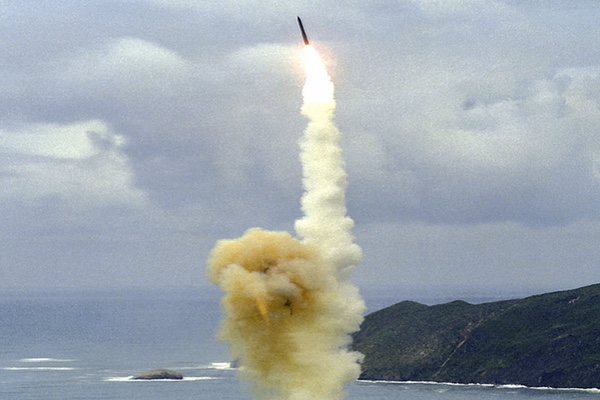Are the U.S. and Russian Governments Once Again on the Nuclear Warpath?

A quarter century after the end of the Cold War and decades after the signing of landmark nuclear arms control and disarmament agreements, are the U.S. and Russian governments once more engaged in a potentially disastrous nuclear arms race with one another? It certainly looks like it.
With approximately 15,000 nuclear weapons between them, the United States and Russia already possess about 93 percent of the world’s nuclear arsenal, thus making them the world’s nuclear hegemons. But, apparently, like great powers throughout history, they do not consider their vast military might sufficient, especially in the context of their growing international rivalry.
Although, in early 2009, President Barack Obama announced his “commitment to seek the peace and security of a world without nuclear weapons,” the U.S. government today has moved well along toward implementing an administration plan for U.S. nuclear “modernization.” This entails spending $355 billion over a ten-year period for a massive renovation of U.S. nuclear weapons plants and laboratories. Moreover, the cost is scheduled to soar after this renovation, when an array of new nuclear weapons will be produced. “That’s where all the big money is,” noted Ashton Carter, recently nominated as U.S. Secretary of Defense. “By comparison, everything that we’re doing now is cheap.” The Obama administration has asked the Pentagon to plan for 12 new nuclear missile-firing submarines, up to 100 new nuclear bombers, and 400 land-based nuclear missiles. According to outside experts and a bipartisan, independent panel commissioned by Congress and the Defense Department, that will bring the total price tag for the U.S. nuclear weapons buildup to approximately $1 trillion.
For its part, the Russian government seems determined to match―or surpass―that record. With President Vladimir Putin eager to use nuclear weapons as a symbol of Russian influence, Moscow is building, at great expense, new generations of giant ballistic missile submarines, as well as nuclear attack submarines that are reportedly equal or superior to their U.S. counterparts in performance and stealth. Armed with nuclear-capable cruise missiles, they periodically make forays across the Atlantic, heading for the U.S. coast. Deeply concerned about the potential of these missiles to level a surprise attack, the U.S. military has already launched the first of two experimental “blimps” over Washington, DC, designed to help detect them. The Obama administration also charges that Russian testing of a new medium-range cruise missile is a violation of the 1987 INF treaty. Although the Russian government denies the existence of the offending missile, its rhetoric has been less than diplomatic. As the Ukraine crisis developed, Putin told a public audience that “Russia is one of the leading nuclear powers,” and foreign nations “should understand it’s best not to mess with us.” Pravda was even more inflammatory. In an article published in November titled “Russia prepares a nuclear surprise for NATO,” it bragged about Russia’s alleged superiority over the United States in nuclear weaponry.
Not surprisingly, the one nuclear disarmament agreement signed between the U.S. and Russian governments since 2003―the New START treaty of 2011―is being implemented remarkably slowly. New START, designed to reduce the number of deployed strategic nuclear weapons (the most powerful ones) in each country by 30 percent by 2018, has not led to substantial reductions in either nation’s deployed nuclear arsenal. Indeed, between March and October 2014, the two nations each increased their deployed nuclear forces. Also, they maintain large arsenals of nuclear weapons targeting one another, with about 1,800 of them on high alert―ready to be launched within minutes against the populations of both nations.
The souring of relations between the U.S. and Russian governments has been going on for years, but it has reached a very dangerous level during the current confrontation over Ukraine. In their dealings with this conflict-torn nation, there’s plenty of fault on both sides. U.S. officials should have recognized that any Russian government would have been angered by NATO’s steady recruitment of East European countries―especially Ukraine, which had been united with Russia in the same nation until recently, was sharing a common border with Russia, and was housing one of Russia’s most important naval bases (in Crimea). For their part, Russian officials had no legal basis for seizing and annexing Crimea or aiding heavily-armed separatists in the eastern portion of Ukraine.
But however reckless the two nuclear behemoths have been, this does not mean that they have to continue this behavior. Plenty of compromise formulas exist―for example, leaving Ukraine out of NATO, altering that country’s structure to allow for a high degree of self-government in the war-torn east, and organizing a UN-sponsored referendum in Crimea. And possibilities for compromise also exist in other areas of U.S.-Russian relations.
Failing to agree to a diplomatic settlement of these and other issues will do more than continue violent turmoil in Ukraine. Indeed, the disastrous, downhill slide of both the United States and Russia into a vastly expensive nuclear arms race will bankrupt them and, also, by providing an example of dependence on nuclear might, encourage the proliferation of nuclear weapons to additional nations. After all, how can they succeed in getting other countries to forswear developing nuclear weapons when―47 years after the U.S. and Soviet governments signed the nuclear Non-Proliferation Treaty, in which they pledged their own nuclear disarmament―their successors are engaged in yet another nuclear arms race? Finally, of course, this new arms race, unless checked, seems likely to lead, sooner or later, to a nuclear catastrophe of immense proportions.
Can the U.S. and Russian governments calm down, settle their quarrels peacefully, and return to a policy of nuclear disarmament? Let’s hope so.